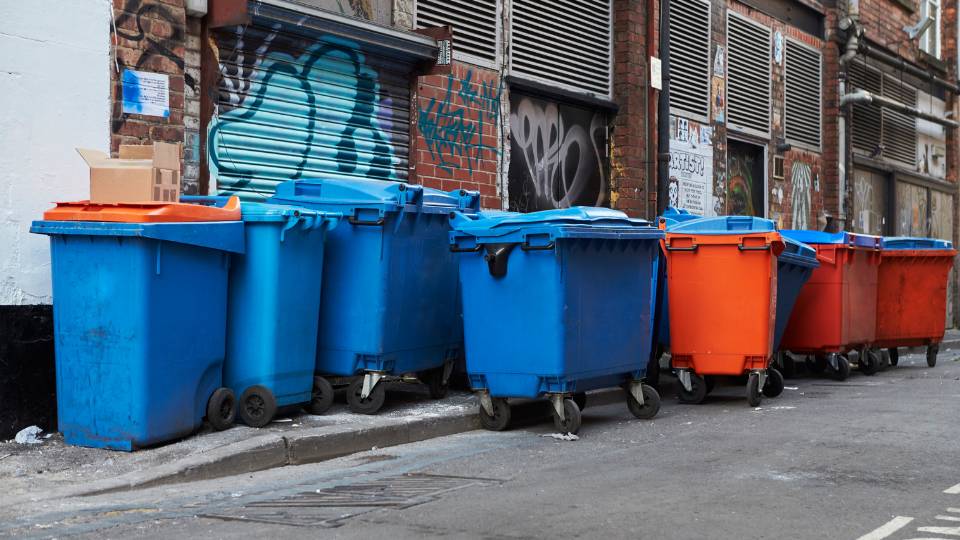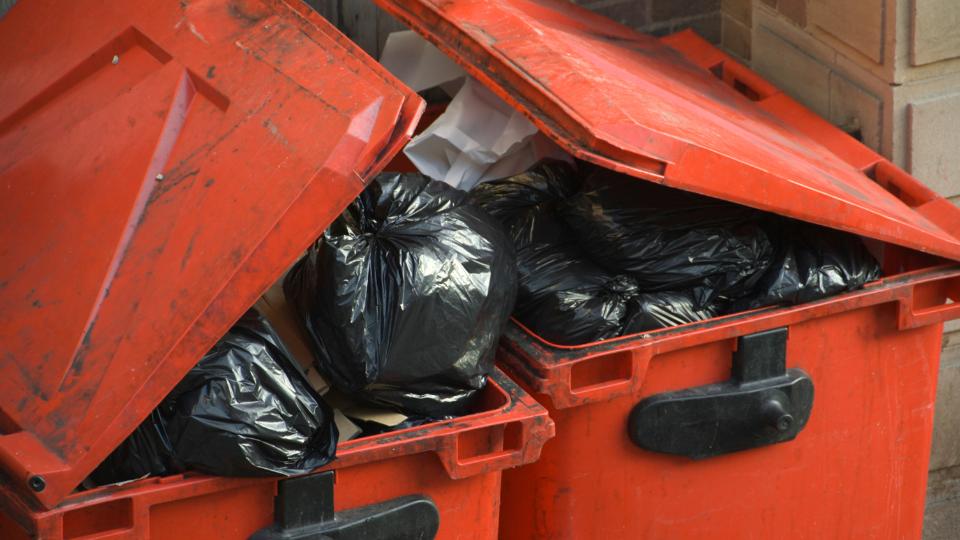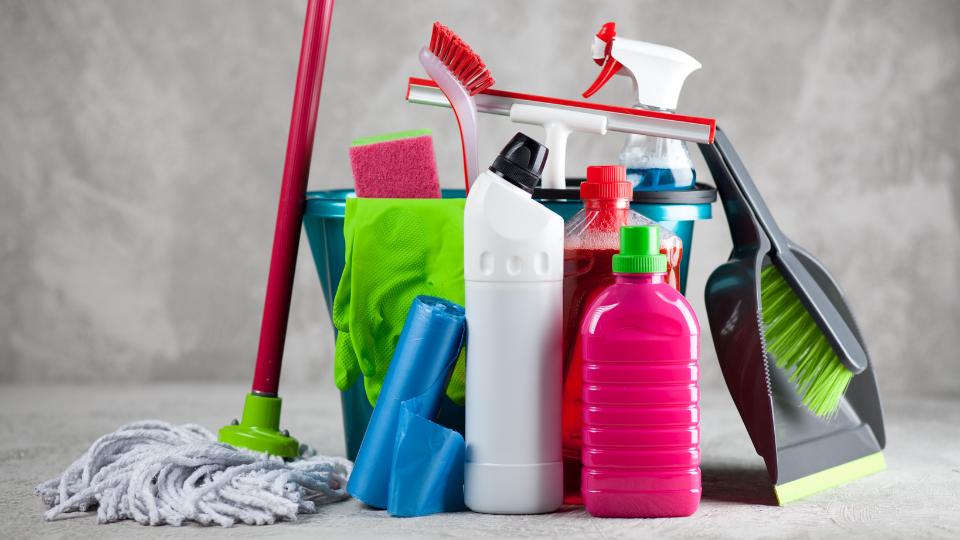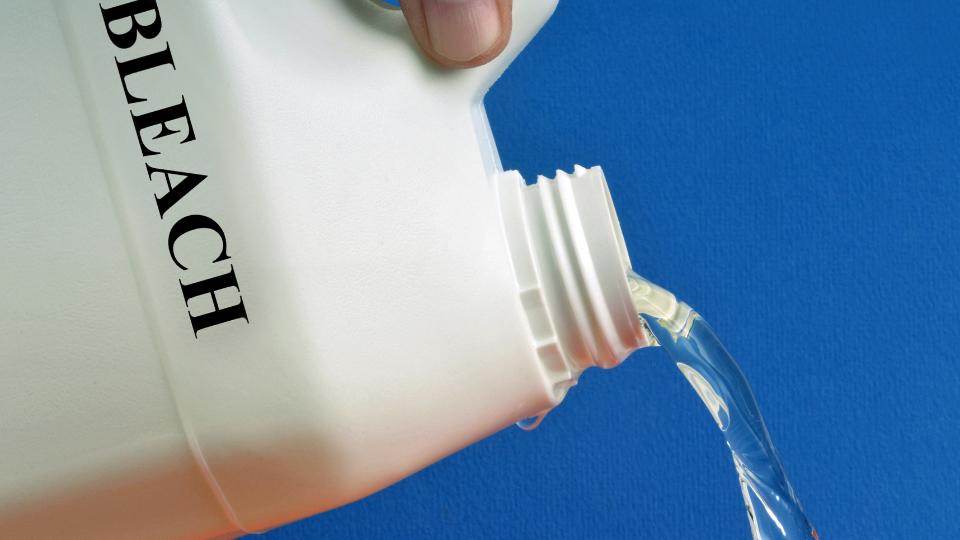
Regular cleaning of your wheelie bins not only helps eliminate unpleasant odours and prevent pests but also ensures a healthier environment.
If you’re unsure about how to clean a wheelie bin effectively, we’ve got you covered. In this blog, we’ll address the top 10 frequently asked questions about wheelie bin cleaning to help you keep your bin in pristine condition.
Table of contents
- Why should I clean my wheelie bin regularly?
- How often should I clean my wheelie bin?
- What supplies do I need to clean a wheelie bin?
- How do I prepare my wheelie bin for cleaning?
- How can I prevent odours from developing in my wheelie bin?
- Can I use bleach to wash my wheelie bin?
- How can I keep my wheelie bin pristine between cleanings?
- Are there any eco-friendly alternatives to chemical cleaners?
- What safety precautions should I take while cleaning a wheelie bin?
- Conclusion
Why should I clean my wheelie bin regularly?
Regular cleaning prevents the buildup of bacteria, pests, and unpleasant odours, promoting a healthier and more pleasant environment around your business.
Properly cleaning your wheelie bin is crucial to prevent potential health hazards. Neglecting regular cleaning can lead to the growth of harmful bacteria, such as E. coli and Salmonella, which thrive in the warm and moist environment of a dirty bin.
Accumulated waste and food residues can attract pests, including rats, mice, and flies, posing a risk to your health and the overall cleanliness of your surroundings.
Common Mistake: Neglecting to clean the wheelie bin regularly can result in strong and persistent odours, attracting pests and making it unpleasant to use or store your bin. Particularly in the summer with increased pest activity.

How often should I clean my wheelie bin?
It is recommended to clean your wheelie bin at least once a month. However, if you notice any foul smells or visible dirt, it’s best to clean it more frequently.
Cleaning your wheelie bin once a month is a good rule of thumb to maintain cleanliness. However, depending on your specific circumstances, you may need to clean it more frequently.
Factors such as the type of waste disposed of and the local climate can affect the rate of odour and dirt buildup.
Common Mistake: Waiting too long between cleanings can result in stubborn stains and odours that become harder to remove.
What supplies do I need to clean a wheelie bin?
Gather the following supplies before cleaning your wheelie bin:
- Protective gloves
- Hose or pressure washer
- Long-handled brush or broom
- Mild detergent or bin cleaner
- Hot water
- Baking soda or vinegar (optional)
To effectively clean your wheelie bin, assemble the necessary tools and materials. Protective gloves are essential to prevent direct contact with waste and potential bacteria. A hose or pressure washer is helpful for rinsing the bin thoroughly.
A long-handled brush or broom will assist in scrubbing the interior and exterior surfaces.
Choose a mild detergent or specialised bin cleaner for effective cleaning, and use hot water to enhance the cleaning process. Baking soda or vinegar can be used optionally to neutralise odours.
Common Mistake: Using harsh chemicals or bleach for routine cleaning can harm the environment and potentially damage the bin’s material. Stick to mild detergents or specialised bin cleaners to clean plastics.

How do I prepare my wheelie bin for cleaning?
Before cleaning, empty your bin and remove any large debris. It’s advisable to choose an outdoor location with good drainage and away from sensitive areas to prevent contamination.
To begin the cleaning process, make sure your bin is emptied of all waste. Remove any large debris that may be stuck inside the bin. It’s important to choose an outdoor location for cleaning, preferably with good drainage, to prevent any potential contamination of nearby surfaces. Keep the bin away from sensitive areas, such as garden plants or food preparation areas.
For larger bins such as the 1100L and 660L four-wheelers, you’ll need to ensure there is enough room to clean them.
Common Mistake: Failing to remove debris or choosing an inappropriate location for cleaning can result in inefficient cleaning and potential contamination.
What is the best method to clean a wheelie bin?
- Put on protective gloves.
- Rinse the bin thoroughly with a hose or pressure washer to remove loose dirt.
- Mix a mild detergent or bin cleaner with hot water.
- Scrub the inside and outside of the bin using a long-handled brush or broom.
- Rinse the bin again to remove all soap residue.
- Optional: Use a mixture of baking soda or vinegar and water to neutralise odours.
- Allow the bin to dry completely before use.
How can I prevent odours from developing in my wheelie bin?
To prevent odours, consider the following:
- Double-bagging waste to contain any potential leaks.
- Avoiding the disposal of food waste without proper wrapping or sealing.
- Sprinkling baking soda or cat litter in the bottom of the bin
Preventing odours in your wheelie bin can help maintain a fresh and pleasant environment. Take these steps to minimise smells:
- Double-bag waste, especially liquids or items prone to leakage
- Properly wrap or seal any food waste
- Sprinkle a small amount of baking soda or cat litter in the bottom of the bin before adding new waste. These substances act as natural deodorisers.
Common Mistake: Failing to double-bag waste or improperly disposing of food waste can lead to strong and persistent odours in your bin.
Can I use bleach to wash my wheelie bin?
While bleach can be effective at disinfecting, it’s not recommended for routine cleaning of wheelie bins as it may be harmful to the environment. Stick to mild detergents or specialised bin cleaners.
While bleach is a powerful disinfectant, it should be used sparingly when cleaning wheelie bins due to its potential environmental impact. Routine cleaning can be effectively carried out using mild detergents or specialised bin cleaners designed to remove dirt and grime. These alternatives are safer for the environment and will keep your bin clean and fresh.
Common Mistake: Overusing bleach or using it as the primary cleaning agent for routine maintenance can harm the environment and cause damage to the bin’s material.

How can I keep my wheelie bin pristine between cleanings?
Use bin liners to contain waste, which helps prevent direct contact with the bin’s interior. Regularly rinsing the bin after emptying it can also help maintain cleanliness.
To keep your wheelie bin cleaner for longer periods between cleanings, consider the following tips:
- Use bin liners or garbage bags to contain waste inside the bin. This creates a barrier between the bin’s interior and the waste, reducing direct contact and potential residue buildup.
- After emptying the bin, give it a quick rinse with a hose to remove any remaining debris or liquids. This simple step helps to prevent the buildup of odours and keeps the bin fresher.
Common Mistake: Failing to use bin liners or neglecting to rinse the bin after each use can result in increased dirt and odour buildup, requiring more frequent and intensive cleaning.
Are there any eco-friendly alternatives to chemical cleaners?
Yes! You can use natural alternatives like a mixture of vinegar and water or baking soda and water to clean your wheelie bin effectively. These options are eco-friendly and help neutralise odours.
If you prefer eco-friendly cleaning solutions, there are natural alternatives to chemical cleaners that can effectively clean your wheelie bin:
- Mix equal parts vinegar and water to create a cleaning solution. Vinegar is known for its disinfecting properties and can help remove odours.
- Baking soda, when mixed with water, forms a paste that can be used to scrub away stubborn stains and smells.
Common Mistake: Not exploring eco-friendly alternatives to chemical cleaners may result in a less sustainable cleaning routine and potential harm to the environment.
What safety precautions should I take while cleaning a wheelie bin?
Ensure you wear protective gloves throughout the cleaning process to avoid contact with waste and potentially harmful bacteria. Additionally, choose a well-ventilated area to clean your bin and avoid inhaling any unpleasant smells.
Safety should always be a priority when cleaning a wheelie bin. Take the following precautions:
- Wear protective gloves at all times to avoid direct contact with waste and potential bacteria.
- Choose a well-ventilated area to clean your bin, especially if using vinegar or other strong-smelling cleaning solutions, to avoid inhaling unpleasant odours.
- Dispose of any waste or cleaning materials properly after completing the cleaning process.
Common Mistake: Neglecting to wear protective gloves or cleaning in an enclosed or poorly ventilated area can lead to potential health risks from bacteria and unpleasant smells.
Conclusion
Maintaining a clean and odour-free wheelie bin is essential for a healthy and pleasant living environment.
By following the proper cleaning techniques, using suitable tools and materials, and implementing preventive measures, you can ensure that your wheelie bin remains clean and free from pests and bacteria.
Regular cleaning and adopting eco-friendly alternatives not only contribute to a cleaner home but also help protect the environment.
Prioritise safety throughout the cleaning process by wearing gloves and working in a well-ventilated area.
By investing a little time and effort into cleaning your wheelie bin, you can enjoy a cleaner, fresher, and more hygienic living space.



